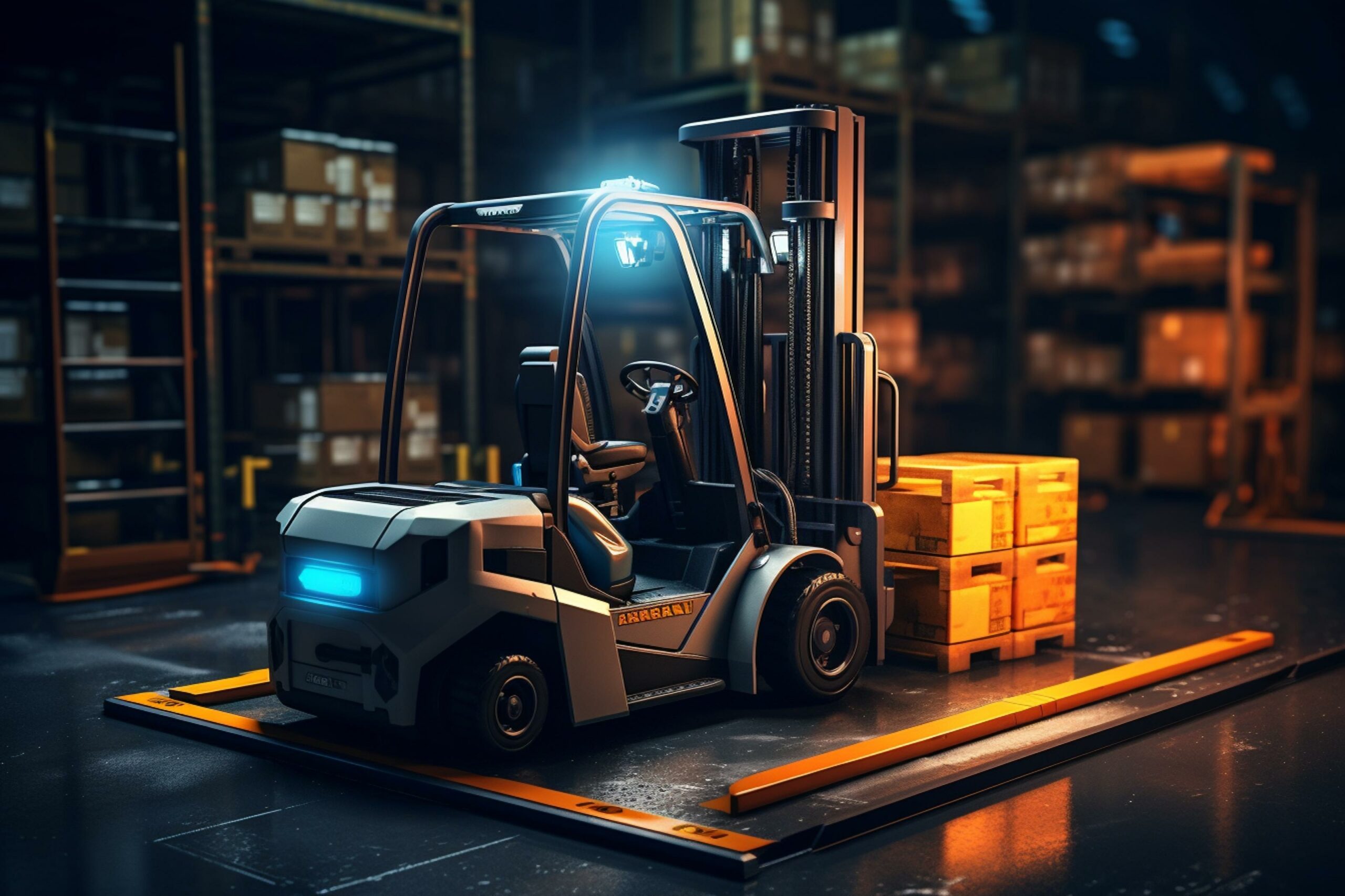As our collective carbon footprint comes under greater scrutiny, every ounce of CO2 and every kilowatt counts. For Class I and Class II lift trucks, the familiar roar of propane and diesel engines is giving way to the clean hum of an electric drive.
Leading this charge is Conway Hui, Director of Sales Application Engineering and Customer Support at Delta-Q Technologies. In his webinar—On-Board Charging for Class I and Class II Lift Trucks—Conway delves into the technologies driving the surge of renewed interest in outside electric lift truck applications.
Following Delta Q’s unique, in-the-field insights, let’s see how electrification is reshaping industry standards in on-board charging solutions for lift vehicles.
The Momentum Behind the Electric Lift Truck Evolution
Electric Class I and Class II lift trucks are gaining traction among end users, even overshadowing their internal combustion counterparts.
Historically, these electric trucks predominantly operated in warehouses due to convenient charging infrastructures. Application in outdoor settings, by contrast, faced limitations owing to the challenges of charging logistics. But the tide is turning.
Regulatory shifts and sustainability initiatives continue to accelerate the all-electric transition. Two examples are notable:
- The EU’s Stage Five emissions restrictions have made diesel engines more intricate and costly—bolstering the case for electric alternatives.
- The California Air Resources Board advocates for zero-emission forklifts, indicative of a broader trend that might soon be adopted across the US.
Yet beyond just compliance, end users are recognizing the myriad benefits of all-electric systems:
- Quieter operations, ideal for diverse environments
- Significant reduction in emissions
- Lower maintenance costs, with fewer components like hydraulics and engine oil
Acknowledging this surge in demand for versatile and sustainable solutions, Delta-Q is at the forefront of pioneering on-board charging technologies. These innovations are set to revolutionize the electric lift truck industry, extending their use to sectors like construction, delivery, and rental.
The Challenge: Beyond the Warehouse
Transitioning Class I and Class II electric lift trucks from the controlled environment of warehouses to the unpredictable outdoors presents a myriad of technical challenges:
- Durability – Unlike their in-warehouse counterparts, on-board chargers must be robust enough to withstand outdoor conditions. This includes weather elements, as well as the shocks and vibrations encountered when navigating rough terrains and cityscapes.
- Charge constraints – While wall chargers in warehouses can offer substantial charging capacities of 10-20 kW, charging for on-board systems is often limited. This necessitates longer charging durations, especially for larger battery packs.
- Compatibility and integration – Beyond ensuring seamless communication between the charger and the battery, integrating the charger with the truck’s telematics system is increasingly essential in outdoor environments—enabling real-time monitoring and optimization based on factors like battery temperature and voltage.
These hurdles emphasize the need for innovative solutions that not only address the technical aspects, but also consider the practical realities of using electric lift trucks in diverse settings.
The Question of Connectivity: Navigating Charging Standards
The introduction of on-board chargers poses a key logistical challenge: What will these trucks plug into? Whether standard wall outlets or specialized EV charging stations, the variability in available infrastructure adds another layer of complexity.
Educating end users on their connectivity options will become crucial to ensure charge constraints can be met efficiently. Consider the multiple outlet connections available in North America alone:
- Standard wall plug (NEMA 5-15) – This 110-volt, single-phase plug offers a modest 1.2 kW—a trickle charge for larger battery packs.
- NEMA L14-30 – Commonly found in construction sites, this 208-volt plug can deliver around 5-6 kW, making it a practical choice (when available).
- J1772 EV connector – This connector supports both Level 1 (single-phase 110-120 volts AC) and Level 2 (up to 19 kW at 208 volts AC) charging. However, most stations typically offer 6-7 kW.
- NACS connector – This more compact connector is a hybrid connector, offering charging capabilities for DC fast charging and for Level 2 charging. The North American Charging Standard connector is also referred to as the J3400.
- CCS (DC fast charging) – An extension of the J1772, adding two pins for direct DC charging. While it can support a staggering 50-400 kW, finding a compatible charging station remains a challenge.
Europe, while lacking such variety, tends to offer better charging returns:
- CE 7/7 – A prevalent 220-volt plug in Europe, offering about three times the power of North America’s standard plug at roughly 3 kW.
- Type 2 (IEC 62196) – The standard EV plug for Europe and much of the world, supporting Mode 2 (up to 7 kW) and Mode 3 (three-phase up to 22 kW) charging.
Universal EV connectors like J1772 in North America and Type 2 in Europe simplify the charging process, whereas the emergence of CCS and CCS Combo ports introduces faster charge speeds. However, the rarity of CCS-compatible charging stations means that standard EV connectors, coupled with EVSE adapters, currently offer the most practical solution.
Meeting the Challenges: Actionable Insights from Delta-Q
Though the journey to optimizing on-board charging solutions for electric lift trucks is complex, these challenges can be transformed into opportunities—with the right strategy.
Here are Delta-Q’s insights and recommendations for OEMs and fleet owners aiming to enhance the versatility of their Class I and Class II electric lift trucks:
- Embrace lithium-ion – Switching to energy-dense lithium-ion batteries reduces maintenance and creates space for on-board chargers. Modular chargers like Delta-Q’s XV3300 can provide up to 10 kW of power, covering most EV charging scenarios.
- Simplify connector choices – Rather than juggle multiple connectors, prioritize the EV-style AC charge inlets. This streamlines on-board space and reduces the intricacies of internal communication circuit integration.
- Verify voltage compatibility – Class I and Class II vehicle manufacturers may have varying auxiliary voltage specifications. It is necessary to maintain a 12-volt output for seamless communication with the EVSE interface—achievable using a small 12-volt battery or a DC-DC converter.
- Educate end users – Charge times are significantly influenced by the power availability at specific sites; charging a 50 kW battery pack with a 3.3 kW power source would take around 15 hours, for example. Educating customers and end users sets realistic expectations, allowing for more effective operation planning.
With the right strategies and a clear understanding of the challenges, fleet owners can ensure their vehicles are always ready for the road ahead. Delta-Q remains committed to guiding this transition, ensuring a seamless and efficient electrification process.
Key Insights Charging Forward
Electric lift truck deployments are anticipated to grow. Beyond the evident benefits of quiet operation and reduced maintenance costs, several factors propel this trend:
- Regulatory changes
- Sustainability initiatives
- The expanding need for lift trucks in external applications
While challenges exist in the shift to electric drive, they are not insurmountable. And innovation has only just begun. The discussion of liquid-cooled batteries, especially for larger packs, may well hint at the future of electric lift truck design—promising enhanced performance and extended battery lifespan even amidst demanding conditions.
With a keen eye on these technical advancements and a commitment to user education, Delta-Q continues driving the charge towards sustainability, one kilowatt at a time.





